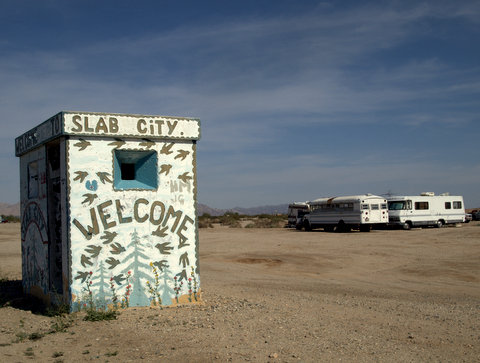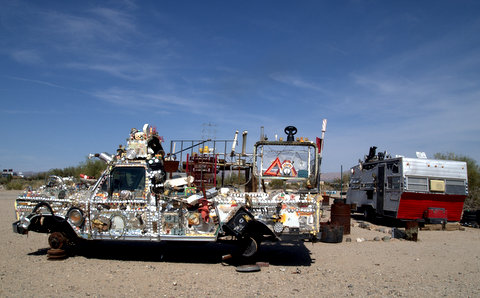The art of boondocking

Some memories hold fast. It’s no effort to conjure the vision of our van parked near a stream in the French countryside with sunlight pouring into the small living space. Our location each evening was dependent on proximity to a village. Each morning we'd venture out to collect fresh croissants at the nearest bakery and take them back to enjoy with coffee freshly brewed on our van stove. It was a magical month and I had no idea that on those evenings, we were officially “boondockers,” living self-sufficiently without water hook-ups or electricity.
The term, boondocking, was created early in the 20th century by American military servicemen who were serving in the Philippines. The Tagalog word for mountain is, “Bundog” and the soldiers used it to mean living in a rural, remote or bushy area. Back in the states slang took over and soon everyone knew what it meant to stay in the “boonies.” In the intervening decades, the RV community adopted “boondocking” to describe camping in remote, rural areas.
There are dozens of RV campsites and clubs scattered across America, but most have little relation to the true experience of boondocking with their expensive fees, electricity, plumbing and abundant WiFi. The most cost-conscious and intrepid RVers have formed a network of free spots and most every one of them could tell you about “Slab City.”
Sixty years, ago just east of the Salton Sea in the Mojave desert at a training base built for the Africa Campaign, General Patton worked his WWII recruits in scorching heat and bone dry conditions. Soon after the war ended, the Army pulled up its installation and left only cement slabs to bleach in the brutal sun.
Campers looking for free lodging soon found a refuge during the winter months. The area became the notorious Slab City. “Geriatric gypsies,” hippies and independent minded nomads have called the place home. It’s true boondocking as there’s no tap water, electricity or cell phones. A few rigs have solar panels or satellite dishes but that’s a rarity.
The area swells with “Snow Birds,” RV campers escaping snow and winter conditions, in the fall as temperatures lower to merely warm in the desert. Most leave in late April as the Mercury pushes higher. Very few remain year round.
Slab City isn’t really a city at all. It is a community none the less and still draws not only gawking tourists, but those interested in the lifestyle, as well as creative entrepreneurs and rebels. There is a website that lists events, concerts, meetings and elicits donations. The organization's mission revolves around mutual respect regardless of economic status or social standing with the goal of saving the “art of boondocking.”
And the art of boondocking is under duress. Some time ago Walmart stores discovered that their largely empty parking lots were filling with overnight guests. The free campers were seen as another source of income and all was well for a while. These campers were not true boondockers but “stealth parkers.” Campgrounds and RV parks however are revenue generators for cities and municipalities. Walmart was alerted that their policy of allowing campers to stay overnight was against city rules and soon “No Overnight Parking” signs were seen at Walmart lots across the country. Police began rousting sleepy campers who ignored the ordinance and worse, served hefty fines into the hundreds of dollars. The gig was up.
Today the movement to find free camping continues. “Dispersed camping” is boondocking on public land. In this case campers find overnight sites on Bureau of Land Management properties or inside National Park areas where it remains legal. Authorities may ask that only designated camp sites be used but the main issue is the creation of fire rings and the threat of fire. Respectful boondockers take pains to use fire carefully, leave no trace behind and go on their way.
Safety and boondocking: Going back to my summer boondocking in southern Europe, I remember feeling far safer near a country stream than parked on a city street. It was certainly more comfortable in the morning to slide the large side door open to fresh air in a rural setting rather than next to a busy sidewalk. Again in cities there are people who hang around outside cars and vans, plus it can be harder to sleep on a street with traffic.
The search continues however each spring and summer as RVs and vans are spruced up and restocked, routes mapped and roads worldwide again fill with all manner of campers and travelers. Find out more about free camping strategies here.
Photos by the author, Elaine J. Masters


1 comments